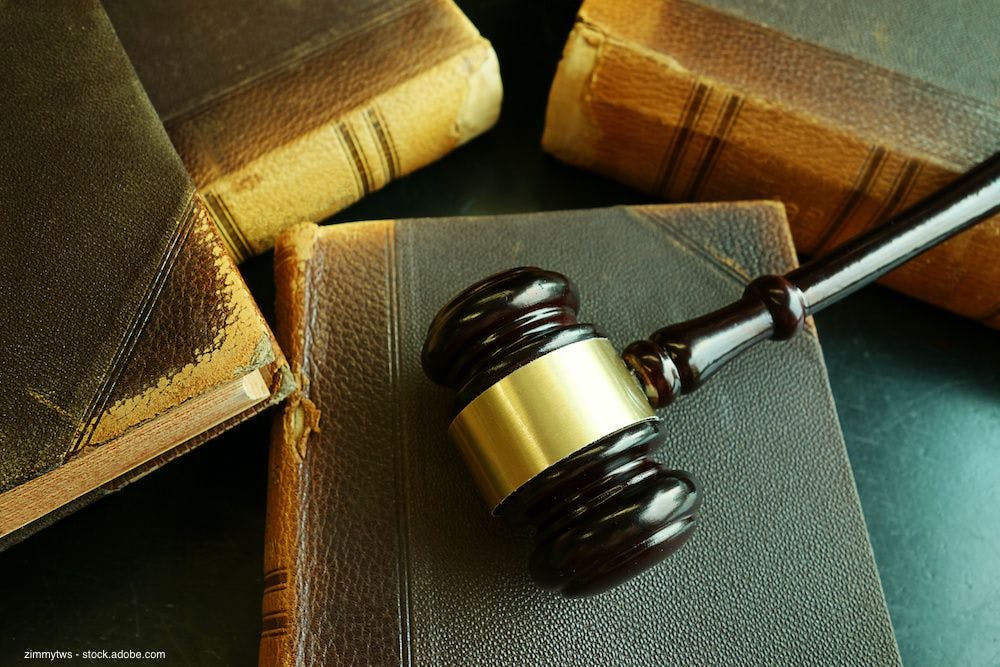Publication
Article
Urology Times Journal
How urologists can help patients prevent stones
Author(s):
Here is what is recommended for fluid intake and dietary changes.
There is good evidence to suggest that increasing fluid intake and making dietary lifestyle changes can prevent future stones or at least reduce aggressiveness of
Necole M. Streeper, MD

patients’ kidney stone disease, said Necole M. Streeper, MD, a urologist and assistant professor of surgery at Penn State Health in Hershey, Pennsylvania. The impact from simply drinking lots of water throughout the day is significant.
“High fluids intake is the most important factor for preventing kidney stone disease and for every 200 mL of water, the risk of stones is reduced by 13%,” according to a study published earlier this year.1
But what urologists, dietitians, and others should or should not recommend in the way of dietary changes is evolving. How clinicians present recommended lifestyle changes can affect whether patients incorporate the adjustments into daily life.
What the guidelines say
The American Urological Association (AUA) recommends that patients with kidney stones increase fluid intake to produce more than 2.5 liters of urine output daily.2
“The AUA recommends doing a metabolic evaluation, which is a 24-hour urine, that gives us the information that we need to know what recommendations to make,” Streeper said. “If a patient has hypercalciuria, or high amounts of calcium in the urine, then we would recommend they follow a normal calcium diet and limit their sodium intake. If somebody has high oxalate in their urine, or hyperoxaluria, we recommend that they limit the amount of oxalate-rich foods in their diet and do a normal calcium diet. For patients who have low levels of citrate, or hypocitraturia, we recommend that they increase their fruit and vegetable intake and limit how much animal protein they get. Then, for high amounts of uric acid in the urine, hyperuricosuria, we recommend they limit their animal protein.”
Charles D. Scales Jr, MD, MSHS

Not all guidelines agree on exactly how much to increase fluid intake, according to Charles D. Scales Jr, MD, MSHS, associate professor of surgery (urology) and population health at Duke University School of Medicine in Durham, North Carolina. The American College of Physicians’ and European Association of Urology’s guidelines recommend patients drink 2.5 to 3 liters daily.3,4
“I typically counsel my patients to drink about 10 10-ounce glasses of fluid, which is about 3 liters of fluid, on a daily basis, assuming they have normal kidney function and don’t otherwise have a reason, like heart failure, that they could not increase their fluid intake,” Scales said. AUA guidelines recommend that patients with kidney stones eat a diet low in sodium, typically around 2000 to 3000 mg of sodium per day, and moderate in calcium intake, which is about 1000 to 1200 mg daily, according to Scales.
Recommendations in the AUA guidelines that are based primarily on expert opinion include having a low nondairy animal protein component to the diet, according to Scales. “I usually recommend maybe 1 small serving of animal protein a day that is not from a dairy source. I also recommend a diet that is rich in fruits and vegetables,” Scales said. “For someone who has made oxalate stones in the past, I typically will recommend they limit their dietary oxalate sources.”
Considering recent data
Such recommendations from guidelines are not set in stone for Ben H. Chew, MD, MSc, director of clinical research at the Stone Centre at Vancouver General Hospital and associate professor of urology at the University of British Columbia in Vancouver, Canada.
Ben H. Chew, MD, MSc

“Not every physician will do the whole metabolic evaluation to look at patients,” Chew said. “I’m leaning more toward not doing one, too, which is a little bit controversial.”
Use of the test is low in the United States. Only 7.4% of the 28,836 patients identified by investigators in 1 study as being at high risk for recurrence had 24-hour urine testing.5 Chew instead uses limited blood tests to make sure patients do not have hyperparathyroidism or hypercalcemia, then makes the same 5 lifestyle recommendations to most of his patients with stones. His first, second, and third recommendations are to drink more water, fourth is to make sure patients have normal amounts of oxalate and calcium in their diets, and the fifth emphasizes a healthy, balanced diet—one doctors recommend to reduce risks for hypertension, diabetes, and high cholesterol.
“I recognize that a low-oxalate diet versus a normal-oxalate diet is controversial and there will be arguments amongst dietitians and stone experts,” Chew said. Restricting oxalate is not necessary, according to Chew, when all patients really need to do is combine the oxalate with calcium. So, have your spinach, Chew said, but add a little cheese on top or a glass of milk.
“If you have unopposed calcium or unopposed oxalate, they will get absorbed into the bloodstream, where they will get filtered by the kidney and then combine with other calcium and oxalate that is already there to form a kidney stone,” Chew says. “You want calcium and oxalate to make the crystal, stay in the gastrointestinal tract so that you can excrete that out in the stool, and still absorb the nutrients. Definitely don’t have a calcium-free diet or avoid dairy because that is part of a healthy, balanced diet, both for stones as well as for bone health. We know that [patients with] kidney stones are also at higher risk for getting osteoporosis.”
Recommending that patients with stones go on a low-calcium diet is based on outdated information, according to Scales.
“That diet has been overturned based on the epidemiologic and the physiologic evidence that shows that low-calcium diets actually increase oxalate absorption,” Scales said.
Chew emphasizes a healthy, balanced diet to all his patients with stones. Urologists often treat stones as a separate entity, as kidney stone disease, according to Chew.
“Epidemiologically, we realize it is part of a whole syndrome. We know kidney stone disease is associated with the metabolic syndrome. We know it comes with diabetes, high blood pressure, being obese, and having high lipids. We know that the more of those 4 things you have, the more likely you are to get kidney stones,” Chew said. “When I see young patients, I think they should be warned to basically follow up with doctors because this could be their sentinel event. I think there is a real opportunity for us to help patients change their lives, not just for kidney stones but also to prevent high blood pressure, diabetes, for which a lot of the risks are modifiable.”
Helping patients make lifestyle changes
Educating patients about how to prevent kidney stone formation requires more than a handout. It takes time and effort, Streeper said. Although Streeper does the educating and is in practice with a dietitian and nephrologist who help to care for her patients with kidney stones, she said other practices might recruit advanced practice providers to educate and guide patients in making lifestyle changes.
It is important to go beyond telling patients what to do and help them figure out how to do it. Patients might face occupational barriers to increasing their fluid intake, for example.
“For people to make a plan of when they are going to drink fluid throughout the day is really important,” Scales said. “Bathroom access can be a really big barrier. For example, classroom teachers have limited time for bathroom breaks during the day, so they have to think carefully about when they might be able to have access to the bathroom and when they might be able to go.”
Another tip is to limit the recommendations to a doable amount because patients often feel overwhelmed by all they must do, Streeper said.
“I always try to pick out and give patients no more than 3 recommendations to do, and I prioritize the 3 recommendations,” Streeper said.
Apps and technology can help patients stay on track with changes, including increasing fluid intake. Streeper and colleagues have been studying a stone-specific technology called sipIT, to determine whether it helps patients drink more water. The device is a watch that connects with a smart water bottle. Together, the devices alert patients in real time if they are not achieving their fluid intake goals.6,7
Scales and colleagues are recruiting for the PUSH trial (NCT03244189), a randomized trial in the Urinary Stone Disease Research Network, sponsored by the National Institute of Diabetes and Digestive and Kidney Diseases that focuses on increasing participants’ adherence to fluid goals for stone prevention. The multicomponent behavioral intervention, focusing on adherence, leverages a smart water bottle sold as the HidrateSpark water bottle (Hidrate) as a study platform, with the primary end point being recurrence of symptomatic kidney stones at a 2-year time point.
References
1. Ferraro PM, Bargagli M. Dietetic and lifestyle recommendations for stone formers. Arch Esp Urol. 2021;74(1):112-122.
2. Pearle MS, Goldfarb DS, Assimos DG, et al; American Urological Association. Medical management of kidney stones: AUA guideline. J Urol. 2014;192(2):316-324. doi:10.1016/j.juro.2014.05.006
3. Fontenelle LF, Sarti TD. Kidney stones: treatment and prevention. Am Fam Physician. 2019;99(8):490-496.
4. Türk C, Petřík A, Sarica K, et al. EAU guidelines on diagnosis and conservative management of urolithiasis. Eur Urol. 2016;69(3):468-474. doi:10.1016/j.eururo.2015.07.040
5. Milose JC, Kaufman SR, Hollenbeck BK, Wolf JS Jr, Hollingsworth JM. Prevalence of 24-hour urine collection in high risk stone formers. J Urol. 2014;191(2):376-380. doi:10.1016/j.juro.2013.08.080
6. Conroy DE, West AB, Brunke-Reese D, Thomaz E, Streeper NM. Just-in-time adaptive intervention to promote fluid consumption in patients with kidney stones. Health Psychol. 2020;39(12):1062-1069. doi:10.1037/hea0001032
7. Streeper NM, Dubnansky A, Sanders AB, Lehman K, Thomaz E, Conroy DE. Improving fluid intake behavior among patients with kidney stones: understanding patients’ experiences and acceptability of digital health technology. Urology. 2019;133:57-66. doi:10.1016/j.urology.2019.05.056
































